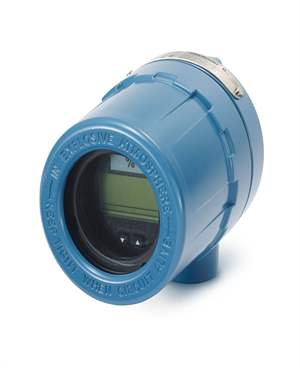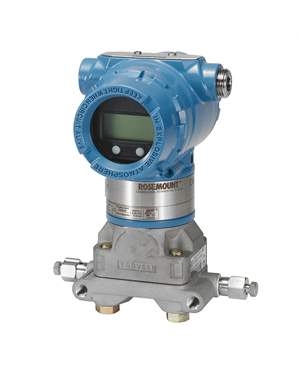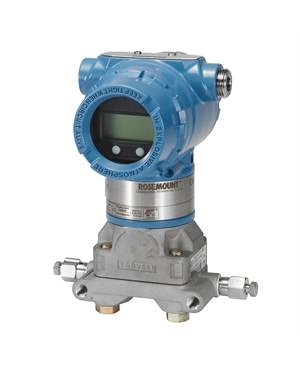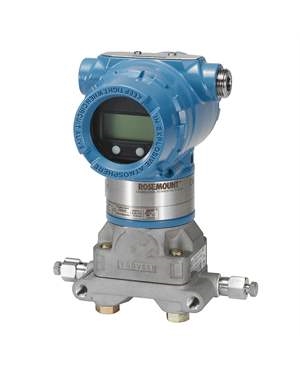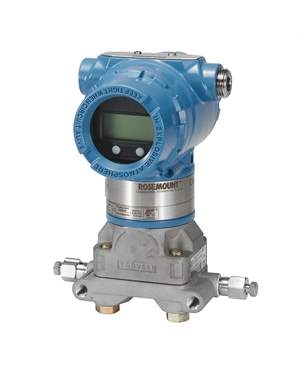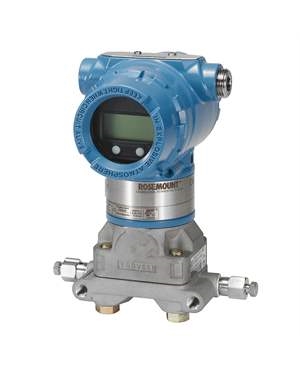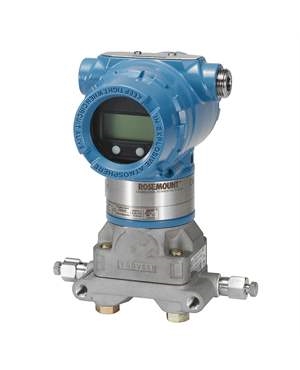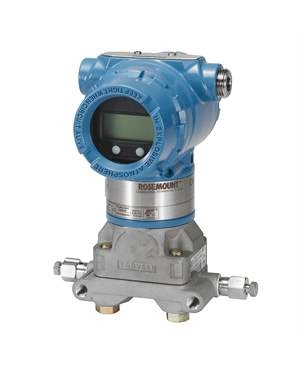Safety Tips for Differential Pressure Transmitter Operation
Brian Craig
May 24, 2019
Differential pressure transmitters are devised to quickly measure the pressure difference of closed and pressurized tanks, pumps or filter controlling, among others. Available in several models, these instruments are largely used across oil and gas, chemical, petrochemical, energy, food and beverage, paper industries. The instrument, which is made to offer high accuracy and the best long-term stability, is designed for cost-efficiency and ease-of-installation even in confined spaces. Similar to other pressure measurement instruments, the pressure transducer units must also be operated following several safety measures. This helps to eliminate injury to personnel or damage to equipment. Do you work with pressure transmitter or are you planning to invest in one? Then the post will be extremely useful, as it lists a few crucial safety precautions to follow while operating the differential pressure transmitter.
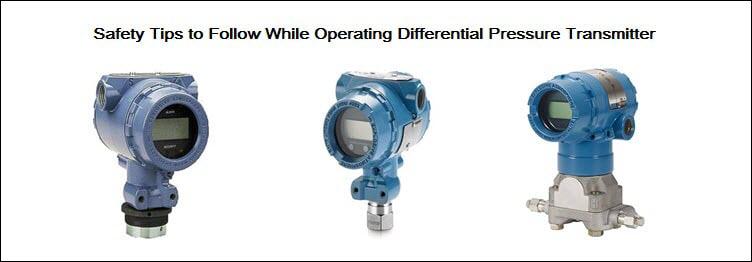
Safety Tips to Follow to Assure Safety While Operating DP Transmitters
Every pressure transmitter is provided with an instructional manual by the manufacturer. Neglecting the safety instructions provided in the user manual is not at all a good idea. Always remember that the manufacturer would have formulated those guidelines to ensure a safe working environment. Although there are several models of differential pressure transmitter available, the following safety precautions are almost common to all.
1. Understand the Equipment:A differential pressure transmitter is a vital component in many process systems, particularly those that involve measuring and controlling fluid or gas flow, pressure, or level. It consists of several key components, including:
- Sensing Element: The sensing element of the differential pressure transmitter is responsible for converting the pressure difference between two points into an electrical signal. Common sensing elements include diaphragms, Bourdon tubes, or capacitive sensors.
- Transducer: The transducer amplifies and converts the electrical signal from the sensing element into a standardized output signal, such as 4-20 mA or digital protocols like HART or Modbus.
- Electronics: The electronic circuitry processes and conditions the electrical signal from the transducer. It may include features like signal linearization, temperature compensation, and digital communication capabilities.
The purpose of a differential pressure transmitter is to measure and transmit accurate and reliable pressure difference readings between two points in a process system. It enables control systems to monitor and regulate process variables based on the differential pressure measurement.
2. Follow Manufacturer Guidelines:It is crucial to read and understand the manufacturer's instructions and guidelines for the proper operation of the differential pressure transmitter. Adherence to these guidelines ensures safe and effective operation by:
- Ensuring Compatibility: Manufacturers provide specific guidelines regarding the compatible process fluids, pressure ranges, and temperature limits for their transmitters. Adhering to these guidelines helps prevent damage to the transmitter and ensures accurate measurements.
- Optimizing Performance: Manufacturers often specify recommended installation, setup, and calibration procedures. Following these guidelines ensures optimal performance and reliable readings from the transmitter.
- Ensuring Safety: Manufacturer guidelines include important safety considerations, such as electrical ratings, grounding requirements, and hazardous area classifications. By following these guidelines, you minimize the risk of electrical hazards and ensure compliance with safety regulations.
3. Conduct Proper Installation:Proper installation of a differential pressure transmitter is essential for accurate measurements and reliable operation. Consider the following steps:
- Mounting: Choose an appropriate location that allows easy access for maintenance and provides stability. Consider factors such as vibration, temperature, and exposure to corrosive substances.
- Positioning: Install the transmitter in a manner that ensures proper alignment with the process piping. Position it at the correct height and orientation to avoid measurement errors due to gravitational effects.
- Sealing: Use appropriate sealing materials and techniques to prevent leaks or ingress of contaminants. Follow manufacturer recommendations for gaskets, seals, and thread sealants.
4. Perform Regular Maintenance:Regular maintenance is crucial to prevent malfunctions, ensure accurate readings, and prolong the lifespan of the differential pressure transmitter. Key maintenance tasks include:
- Calibration: Regularly calibrate the transmitter to maintain measurement accuracy. Follow the recommended calibration intervals and procedures provided by the manufacturer.
- Inspection: Inspect the transmitter for any signs of damage, corrosion, or wear. Check the integrity of electrical connections and wiring.
- Cleaning: Keep the transmitter clean and free from dust, debris, or process fluid buildup. Use appropriate cleaning methods and avoid using harsh chemicals that could damage the transmitter.
5. Handle with Care:Proper handling of the differential pressure transmitter is crucial to prevent damage and ensure its longevity. Consider the following guidelines:
- Transporting: When transporting the transmitter, use appropriate packaging and handle it with care to avoid shocks, impacts, or excessive vibrations.
- Storing: Store the transmitter in a clean and dry environment, away from extreme temperatures, corrosive substances, or direct sunlight.
- Connecting/Disconnecting: Follow proper procedures when connecting or disconnecting the transmitter to avoid strain on electrical connections or causing misalignment.
6. Observe Electrical Safety:When working with the differential pressure transmitter, it is essential to observe electrical safety practices to prevent accidents and ensure personal safety. Consider the following:
- Proper Grounding: Ensure proper grounding of the transmitter to prevent electrical hazards and eliminate the risk of electric shock.
- Handling Electrical Connections: Handle electrical connections with care, ensuring they are secure and properly insulated. Follow lockout/tagout procedures when necessary.
- Avoid Overloading: Do not exceed the electrical ratings specified by the manufacturer. Avoid overloading the transmitter with excessive current or voltage.
7. Follow Process Safety Guidelines:Adhering to process safety guidelines specific to your industry or facility is crucial to ensure the safe operation of the differential pressure transmitter. Consider the following measures:
- Lockout/Tagout Procedures: Follow established lockout/tagout procedures to isolate and de-energize equipment before maintenance or repair work.
- Permit-to-Work Systems: Comply with permit-to-work systems when performing tasks involving the transmitter in potentially hazardous environments or processes.
8. Emergency Response:In the event of emergencies or abnormal situations involving the differential pressure transmitter, it is important to respond appropriately. Here are some guidelines for emergency response:
- Shutdown Procedures: Initiate the shutdown procedures for the process system if necessary, following established protocols to prevent further escalation of the emergency.
- Isolation of Equipment: Isolate the differential pressure transmitter from the process system by closing valves or isolating devices to contain the emergency and prevent the spread of hazardous substances or conditions.
- Contacting Appropriate Personnel: Notify the relevant personnel, including supervisors, operators, and maintenance staff, about the emergency. Provide them with essential details about the situation and any immediate actions taken.
9. Training and Competence:Proper training and competence are vital for personnel involved in operating and maintaining the differential pressure transmitter. Consider the following:
- Training Programs: Implement comprehensive training programs that cover the operation, maintenance, and safety aspects of the transmitter. Provide both theoretical knowledge and practical hands-on training.
- Continuous Education: Encourage personnel to continuously enhance their knowledge and skills related to the safety practices and the specific requirements of the differential pressure transmitter.
Since differential pressure transmitters are usually put to operation in hazardous environments, it is always important to use them right by following all the guidelines stated in the user manual. Many times, as mentioned earlier, users tend to overlook the guidelines provided, which in turn leads to dangerous consequences such as injury or failures to components that are unrepairable. All these can be avoided if you have keenly followed the guidelines. Availing the instrument from leading sources also helps because a manufacturer always offers an expert guidance on using the system at the time of purchase. This helps you understand the product better and use the system wisely. The Transmitter Shop is one such distributor who offers several models of differential pressure transmitters at discount pricing, quick shipment, and a two-year warranty along with expert customer assistance.
Related Posts
- What are the Steps Involved in Calibrating Pressure Gauge?
- All Important Questions on Reconditioned Transmitters Answered
- Is Remanufactured Transmitter a Better Option than a New One?
- Differential Pressure Transmitters: How Do They Help in Flow Measurements?
- 3 Whats that Explain How Often You Should Calibrate Pressure Transducer
- Guidelines for Troubleshooting Pressure Transducers
- Learn How to Calibrate a Pressure Transmitter – II
- Learn How to Calibrate a Pressure Transmitter
- Know Three Interesting Uses of Pressure Transmitters
- The Features and Benefits of Rosemount 1199 Direct Mount Transmitters
- 3 Major Pressure Transmitter Technologies That Made the Device Popular
- An Unconventional Guide to Selecting the Right Pressure Sensor
- Factors To Be Considered While Differentiating $40 and $400 Pressure Transmitters
- Tips to Augment the Performance and Service Life of Pressure Transmitter
- Factors of Consideration When Choosing Pressure Transmitters
- 5 Most Popular Pressure Transmitter Technologies
- Important Calibration Tips for Pressure Sensors
- Tips to Improve the Performance of Pressure Sensors
- Factors to Consider When Choosing a Pressure Transmitter Manifold
- Safety Tips for Differential Pressure Transmitter Operation
- Impact of Shock and Vibration on Pressure Transducer
- Rosemount 3051S vs 3051C Transmitter – What is Your Choice?
- Rosemount 2088 Vs Rosemount 3051 – A Few Points of Differences Discussed
- What Are Diaphragm Seals and Their Types?
- Difference in Conventional Transmitters and Smart Transmitters
- How to Choose Diaphragm Seals for Your Application?
- How to Select Pressure Transmitter for Your Application?
- Remote Seals: Significance, Working Principle & Applications
- How Do You Calibrate A Flow Transmitter?
- What is Absolute Pressure Transmitter & how does it work?
- HART Communication Protocol: Overview, Working Principle, Benefits in Industrial Automation
- Absolute and Gauge Pressure Transmitters - Overview and Working Principle
- Flow Meter vs Flow Transmitter: Know the Difference
- Temperature Transmitter: How to Select The Efficient One for Your Application?
- How Do You Test for 4 to 20mA Signal in a Pressure Transmitter?
- Multivariable Transmitter: What Is It and How Does It Work?
- Pressure Transmitters vs. Pressure Transducers: Learn the Differential Characteristics
- Procedure to Calculate Accuracy of Pressure Transmitter Discussed
- An Ultimate Selection Guide for Flow Transmitters
- The Benefits and Challenges of HVAC System Balancing
- Understanding Pressure Ranges and Units for Fluid System Monitoring
- Understanding the Impact of Pressure Fluctuations on Drying Performance
- Monitoring and Controlling Energy Production in Power Plants
- Common Challenges in Air Flow Measurement and How to Overcome Them
- Pressure Monitoring in Pump Systems: A Comprehensive Guide
- Exploring Density and Viscosity Measurement in Industrial Processes
- Steam Boiler Drum Level Measurement A Comparison of Control System Technologies
- Furnace Flame Sensor Faults Everything You Need to Know for Safe Operation
- Comparison between Multi Valve Manifolds Block Valves and Bleed Valves
- Understanding Electrochemical Detection: Principles, Techniques and Environmental Application
- How Can Greenhouse Gas Emissions Be Reduced?
- Furnace Flame Sensor Faults Everything You Need to Know for Safe Operation
- Understanding Electrochemical Detection: Principles, Techniques and Environmental Application
- How Can Greenhouse Gas Emissions Be Reduced?
- Pneumatic Pressure Controllers: A Safe Choice for Hazardous Areas
- A Practical Guide to Vacuum Measurement and Operation
QUICK ENQUIRY
